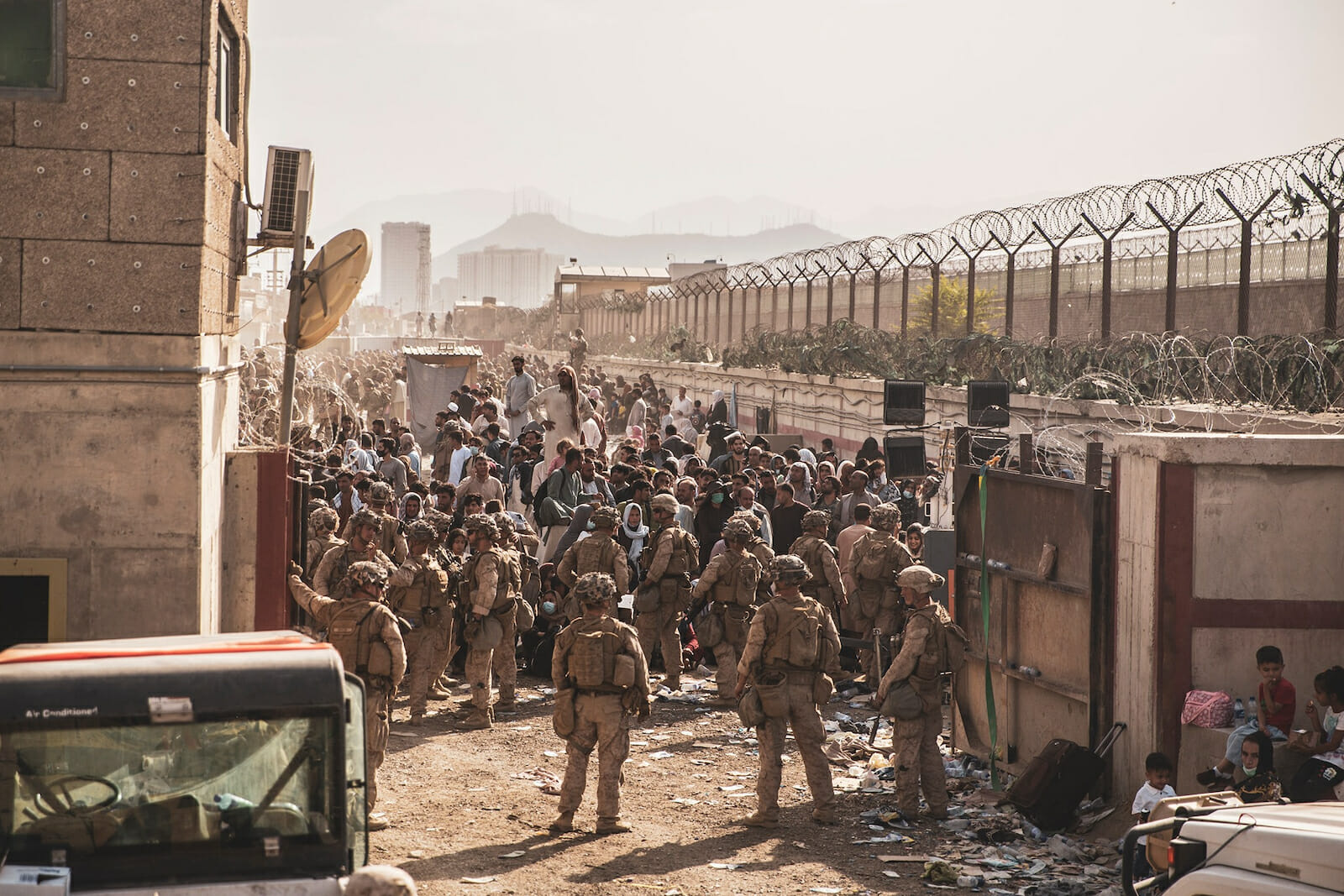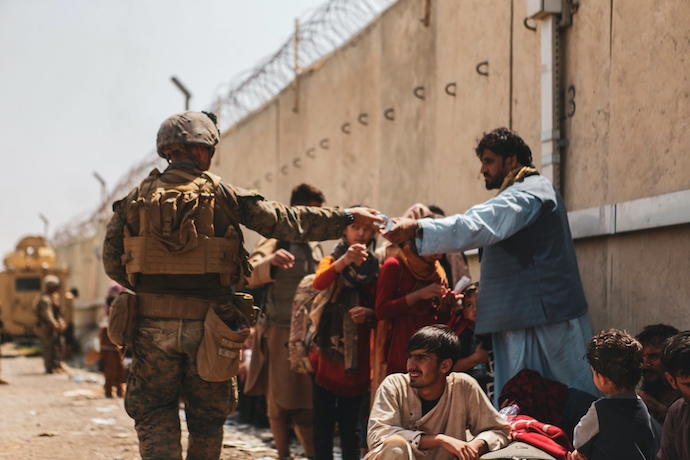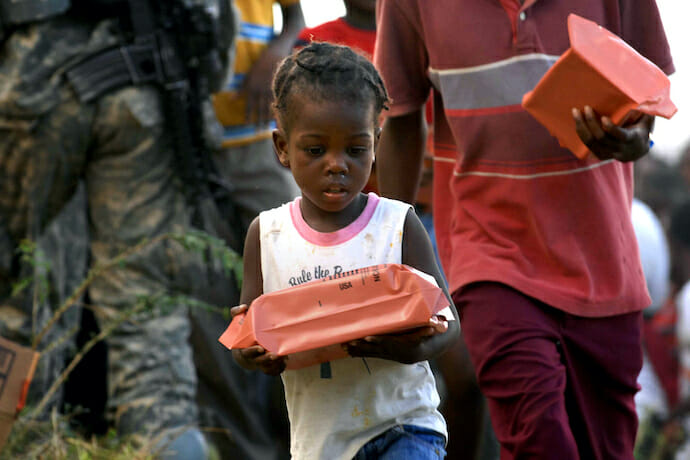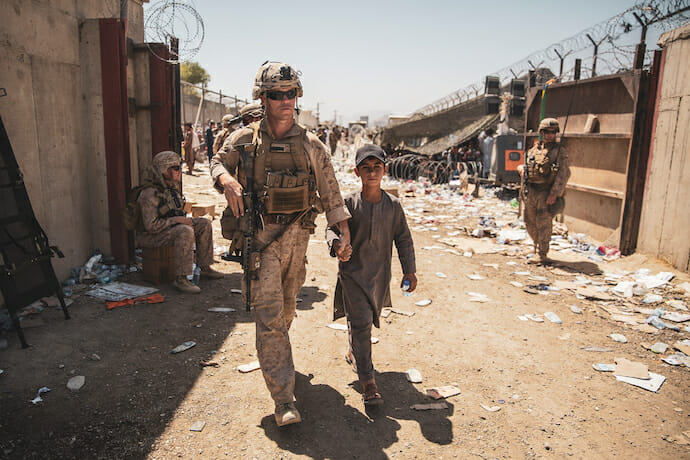
The Surprisingly Similar Failures in Afghanistan and Haiti
When I was finishing my Master’s degree in International Development in 2010, I accepted a year-long project management fellowship with the NGO Catholic Relief Services; they told me that they were sending me to India. A month later, my posting was changed to the Dominican Republic, ostensibly because I speak Spanish but more likely because I speak French as well. And so, not surprisingly, I moved to Haiti after my fellowship was over to help with the reconstruction of Port-au-Prince after its cataclysmic earthquake just a year prior.
When I went to the CRS fellows’ orientation in Baltimore a few months later before shipping out, I made a friend, and we discovered that she was initially slated to go to the Dominican Republic before having her posting switched to India. She would, also unsurprisingly, end up in Afghanistan after her fellowship for several years. Two very different disasters, two aid darlings, two young starry-eyed fellows, and a set of sliding doors. I can’t help but wonder what my experience in India and likely Afghanistan would have been like. And I also can’t help but draw parallels between the tragedies in Haiti and Afghanistan in my mind.
When people who have worked in Afghanistan, be it for the military or the NGO/aid community, talk of the country, they often speak of its tremendous beauty. I have not yet had the opportunity to visit Central Asia, never having been to a -Stan country, but the region is definitely on my list. I suppose, for many people, they have a hard time conceiving of Afghanistan as a beautiful place. If all you had heard of a country was its history of extremist violence and lawlessness, you might only conceive of it in a negative light. Despite the glowing reports of veterans of the Afghan war and numerous aid friends about the countryside and its inhabitants, I imagine that there is a conception among many of an inherent violence or extremism baked into Afghan society. Though in assuming that this is the popular conception, I may myself be succumbing to stereotypes held by my fellow countrymen and propagated by major news outlets. The recent outpouring of money, support, and volunteers in the wake of the ongoing Afghan refugee crisis has been a welcome tonic in an otherwise bleak news cycle. The developed world, and in particular the U.S., owes Afghanistan and Afghans in particular, a sizeable debt, and hopefully, they will make good on this marker.

Similar to Afghanistan, when people conceive of Haiti, they no doubt think of a disaster zone. A seeming magnet for hurricanes. A catastrophe waiting to happen. A vulnerable, failed state that the aid community, despite all of their money and all of their men (and women), couldn’t put Haiti back together again. If people know anything about the country, it is most likely related to poverty, deforestation, or the diaspora that emerges from similarly long-suffering, seemingly cursed countries (Lebanon also springs to mind). People understandably flock to the various lovely beaches of the Dominican Republic – Punta Cana, Samana, Las Terrenas – but are ignorant to the fact that Haiti, situated on the very same island, has the same pristine beaches, crystal clear waters, and sea life teeming with a myriad of diving and dining possibilities. They are just more difficult to access because of Haiti’s virtually non-existent tourism infrastructure. Yes, Port-au-Prince is terribly polluted and lacks the basic water and sanitation capabilities that a city of its size needs to provide to ensure public health, decent living conditions, and disease prevention. But drive an hour or two outside of the capital, either to the mountains of Kenscoff or Furcy to the south, or to the beaches both northwest and west, and you are treated to the Caribbean’s trademark natural beauty of which you seldom if ever hear in relation to Haiti.
Beyond the superficial parallels of mere misconceptions, there is another, deeper, more troubling commonality between the cases of Afghanistan and Haiti – namely, the failure of the international community to live up to its many promises. The United States and its NATO and coalition partners invaded Afghanistan in 2001 ostensibly to destroy Al Qaeda, but this mission quickly morphed into one of nation-building, similar to the project that would be undertaken in Iraq. The U.S. promised democracy. It promised freedom. It promised a society that would allow women the opportunity to pursue an education, fully participate in civil society, and make their voices heard. The U.S. pumped an estimated $2 trillion into Afghanistan over the last 20 years and now, with the spectacular collapse of the Afghan government and military, has little to show for it. Yes, a generation of Afghans were able to grow up in a more open, tolerant society. Girls were able to access education. Civil society was able to bloom.
This is no small feat, and the people involved in these efforts should feel justifiably proud of their work; I sincerely hope that they do not feel that their efforts were in vain. Nonetheless, the scenes at the airport in Kabul over the last week were viscerally horrifying and saddening and brought the failure of the U.S. and its allies to make any sort of lasting change into clear relief. And what of the people left behind? The collaborators on whom the U.S. depended. The women that USAID and other NGOs rightfully empowered? The population that now faces the prospected of a return to the repressive, draconian, and anachronistic policies of the Taliban?

Any number of promises were also made to Haiti and Haitians after the 2010 earthquake. We’re with you. We won’t forget you. We will help you to “build back better.” Over $13 billion in aid was pledged after the earthquake, and though a good bit of this promised funding was never delivered, a lot of money was poured into the country in the subsequent years. But because of endemic corruption and poor governance and Haiti-being-Haiti, it was doomed to fail. Or so the story goes. This facile narrative of course belies several deeper truths. True, Haiti had long-standing, intractable issues like the aforementioned corruption and wretched governance; furthermore, an oligopolistic stranglehold of the economy by certain domestic power brokers actively prevented broader economic development. But the U.S. bears its own share of the blame for the current situation. In the years prior, subsequent U.S. administrations were perfectly content to look the other way during decades of abuses of the kleptocratic Duvalier dynasty, as long as the country remained anti-communist and relatively stable, albeit abjectly poor and underdeveloped. Successive generations of Haitians left the country to seek a better life, often in the U.S., draining of the island of essential talent and promise while little was invested in the country itself.
The international community should not escape blame either. Before the earthquake, there were any number of long-standing aid programs that alleviated suffering but generated little in the way of long-term development. After the earthquake, Haiti became the “Republic of NGOs.” Hundreds of NGOs descended on the country to “save Haiti,” with little idea of the inherent difficulties and pitfalls associated with the task, little local knowledge or expertise, and little appetite for staying for the decades it would take to truly build back better. The disappointing incoherence of the Clinton-sponsored Interim Haiti Recovery Commission (IHRC), which was supposed to bring together Haitian government officials, national aid agencies, and the NGO community in a high-level coordination forum, was emblematic of the broader failures to produce real and lasting results in the rebuilding efforts.
Neither the United States nor the international community subscribes to the “if you break it, you buy it” school of thought. Over the course of the last 20 years, both have contributed their fair share to exacerbating the already difficult situations in these respective countries. The U.S. and its allies could not bring stability, peace, or prosperity to the Afghan people. And all of the UN missions, peacekeeping troops, and meetings-upon-meetings could not absolve them of their failures to develop the country or improve life for the average Haitian, to say nothing of the cholera epidemic it unleashed upon the country (and subsequently denied) in October of 2010.

Afghanistan and Haiti are both, admittedly, among the most difficult contexts in the world in which to achieve lasting development or stability. And the U.S. and the international community should be commended for trying and not simply throwing up their hands when presented with Gordian problems. But they both ended in failure. They both ended with broken promises. And disappointed, disillusioned populaces. There was and is a real human cost to these failures. What might we learn in their wake?
Admittedly, I know the Haitian context much better than the Afghan one, having lived and worked there. And a common refrain when Haitians are asked what could have been done better is simply that “they could have asked us.” Haitians were often ignored or not consulted when programs were put in place for their benefit. So, if they didn’t fully support programs foisted upon them, or even actively undermined them, it might not be terribly surprising given the lack of consultation and buy-in.
Afghanistan appears, at least from my imperfect assessment, to have also been a case of hubris. That we knew better than the people living the day-to-day of the situation. That we, with our vast resources and indomitable will (until it wasn’t), could carry the day. What we perhaps need is a bit more humility in our beliefs in what we can accomplish, but also an understanding that we cannot do it alone. That we need Afghans and Haitians in prominent leadership positions in the organizations and efforts that are specifically tasked with helping them. That we need to harness the power, talent, and knowledge of Afghani and Haitian civil society to steer and guide our decisions and our work. And, as much as it might be frustrating (and I had my own maddening run-ins with corrupt local Haitian government officials), we need to work through each country’s government. We need to build their professionalism and their capacity. Because, as history shows, we will not stay indefinitely. And when we leave, we need to be able to rely on competent governments that can effectively promote the interests of its citizens.
I still wonder sometimes how my life might be different had I headed first to India and then Afghanistan. Would I now be worrying about friends trying to escape the country, those that we left behind, much as I worry for my former Haitian colleagues and friends to whom I said goodbye when I moved on, just as the international community did, when my mission came to an end? Ultimately, I’m pretty sure that my individual actions likely would not have made a larger difference, though I do still believe in the individual and collective power of important gestures and sacrifice. What lessons, I wonder, has my country or my former employers at the United Nations and Catholic Relief Services learned that will help local people to chart a better future for Afghanistan and Haiti? The citizens of these countries, in the interim, have learned not to trust our gilded promises. There is, I hope, still time to make amends. To make good on some, if not all, of those initial promises. To not forget about their respective plights when the reporters leave and the headlines fade. We owe them both better.

